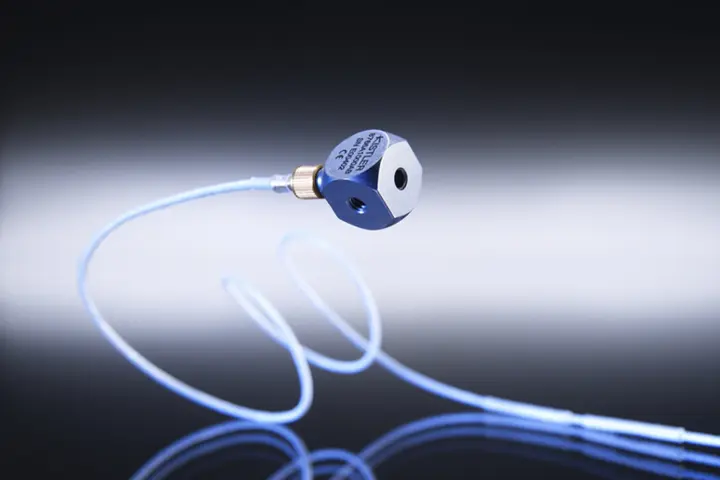In certain industrial sectors or in environments exposed to strong negative pressure, such as semiconductor technology, aircraft technology in the aerospace industry and the energy sector, outgassing can result in serious problems with optical and electronic devices. For this reason, strict rules apply in terms of purity and the outgassing volume of the materials used.
What is the significance of outgassing in the aerospace sector?
Any hardware that outgasses in the high-vacuum environment of outer space – or any of the materials that make up this hardware – can significantly impair the proper operation of a variety of applications: this occurs when part of the released gasses condense on neighboring surfaces, for example on camera lenses.
For this reason, every hardware component that is used for the development of aerospace applications or vacuum systems must be qualified in terms of its outgassing properties. The necessary tests are carried out in ultra-high-vacuum (UHV) systems.
How is the degree of outgassing defined for high-vacuum environments?
The degree of outgassing is critically dependent on the material and its characteristics, the temperature and the amount of time the material spends in a vacuum.
For aerospace applications, three outgassing parameters are defined in accordance with the ESA standard. The test in accordance with the ESA standard ECSS-Q-ST-70-02C 'Thermal vacuum outgassing test for the screening of space materials' is based on the comparison of the measured outgassing rates in the test chamber before and after introducing the test object:
Total mass loss (TML): mass loss of a material sample expressed as a percentage compared to the initial mass after exactly 24 hours in a high-vacuum environment at a temperature of 125°C. Before testing, the material sample is stored for 24 hours at a relative humidity (rH) of 55% and a temperature of 22°C.
Recovered mass loss (RML): mass loss of a material sample expressed as a percentage after exactly 24 hours in a high-vacuum environment at a temperature of 125°C followed by 24 hours of conditioning at a relative humidity (rH) of 55% and a temperature of 22°C.
Collected volatile condensable material (CVCM): mass of the contaminate on a collector plate (temperature: 25°C) over a material sample after exactly 24 hours in a high-vacuum environment, expressed as a percentage.
According to the relevant standard, the materials for general aerospace applications must meet the following requirements:
NASA standards often contain the criterion: TML < 1.00% and CVCM < 0.01%.
All non-metallic materials that are not hermetically sealed, e.g. plastic cables, must comply with this standard in order to be used in high-vacuum environments.
One way to prevent outgassing is to equip hardware, such as sensors, with hermetically sealed metal housing.

